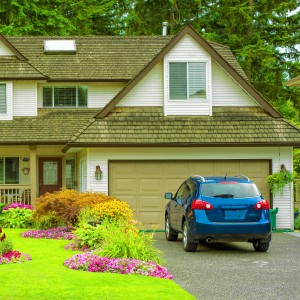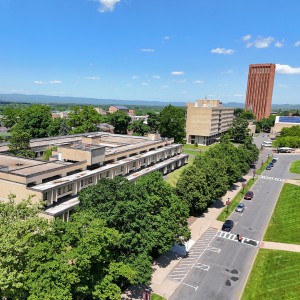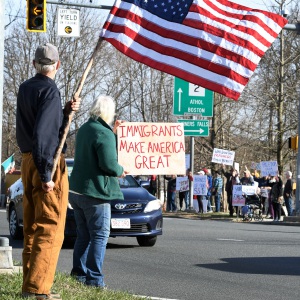My Turn: How to make dual stream recycling work for Greenfield

mactrunk mactrunk
| Published: 01-22-2024 8:29 AM |
At the Jan. 17 City Council meeting, Department of Public Works Director Marlo Warner and grant writer Athena Bradley presented an overview of the EPA recycling contract that Greenfield has been awarded. The presentation clearly outlined three proposals and addresses the areas of concern or conflict that Greenfield must consider.
The only proposal that allowed viable dual stream recycling demonstrated the process costing a lot more upfront money. Although filled with many ambiguities, it clearly outlined the areas of concern or conflict that Greenfield must consider in each proposal.
Using the same data from the DPW, we suggest a fourth proposal that allows dual stream and doesn’t contaminate our recycling nearly as much as single stream does (which allows more of our materials to be recycled), and therefore, is much better for our environment.
We believe that several things are clear.
■ Director Marlo Warner needs new recycling trucks and needs them as soon as possible. This contract should be signed and we should move ahead.
■ Considering the number of nearby cities and towns that have returned to dual stream after trying single stream recycling, I think we can learn from their experiences. We do not have to go through the same process ourselves as suggested by the DPW director.
■ From financial, control, and emissions standpoints, it appears to us that staying with the dual stream Springfield Materials Recycling Facility is the way to go.
Recognizing that dual stream provides additional challenges, how do we get there? Thinking through our own recycling experiences, this is what we have observed.
Article continues after...
Yesterday's Most Read Articles
 Madi Liimatainen becomes first Turners Falls softball pitcher to reach 1,000 strikeout milestone (PHOTOS)
Madi Liimatainen becomes first Turners Falls softball pitcher to reach 1,000 strikeout milestone (PHOTOS)
 Real Estate Transactions: April 11, 2025
Real Estate Transactions: April 11, 2025
 Mohawk Trail Regional School District plans trainings following staff misconduct allegations
Mohawk Trail Regional School District plans trainings following staff misconduct allegations
 Orange’s credit card policies in line with state advice, town officials say
Orange’s credit card policies in line with state advice, town officials say
 Feds revoking visas, terminating student statuses of four more UMass students, bringing total to 10
Feds revoking visas, terminating student statuses of four more UMass students, bringing total to 10
 Attendance growing at weekly Gill standouts protesting Trump administration
Attendance growing at weekly Gill standouts protesting Trump administration
For cans and bottles, in our present every other week system, we do generally not fill up more than plastic milk crates of recycling. And when we have had more than this, the next recycling pickup has not been a large one. Our conclusion is that a 35-gallon toter (about a yard high and on wheels for easy movement) for cans and bottles that is picked up once per month would work for many residents of Greenfield. For larger households, the 96-gallon (less than 4 feet high and on wheels for easy movement) would work for them.
For paper and cardboard, we rarely have needs beyond the green recycling box that the city supplied many years ago. When we do, it is because a large cardboard box, even when broken down, does not fit in the green box. Again, for many residents, the 35-gallon toter would work well. And larger households would likely find the 96-gallon toter would work for them.
For the most part, larger boxes, when broken down, will fit into either of these toters.
Here is our suggestion. Residents should be allowed the choice of 35-gallon or 96-gallon toters, with the option of switching up or down in the first year of their use. Each type of toter would be a different color and would have the items to be deposited in them either printed on them or noted with a very large sticker. We would have pickup for each set of items once per month.
For instance, for group A, cans and bottles would be picked up in the first week of the month and the paper and cardboard would be picked up on the third week of the month. When we would see everyone else on the street putting out their green toter, we would know it would be time to put ours out, too.
We would not be using an every other week system as we are now. We would not have recycling in the last week of five-week months and still be able to do this in four-day weeks. That would cut a certain number of trips automatically.
If we understand the logic of the discussion at the Jan. 17 meeting correctly, this kind of a system would not require a fourth truck that would be required to serve as backup. The benefits to Greenfield in terms of lowering other anticipated costs that were noted for the transition to single stream could be used for the additional costs incurred by providing two toters instead of one per household.
We believe that residents could easily adapt to this system and would meet our financial and ecological needs and desires as residents, and Greenfield’s as a community.
This column is from Greenfield residents Susan Worgaftik , Paul Jablon, Nancy HazardKim Wolcott, Jesus Leyva, David Cohen, Edie Heinemann, Scott Jablon, Peg Hall, Doug Selwyn, Louise Amyot, Carol Letson, Becca King, Patti Williams, and Dorothy McGiver, and dozens of other Greenfield residents.






 The World Keeps Turning: Morning in America? Or mourning?
The World Keeps Turning: Morning in America? Or mourning? My Turn: We need a bigger bed
My Turn: We need a bigger bed Todd Damon: DOGE team will bring good results
Todd Damon: DOGE team will bring good results Michael Ward and Doug Lyman: A firefighter’s tribute
Michael Ward and Doug Lyman: A firefighter’s tribute
